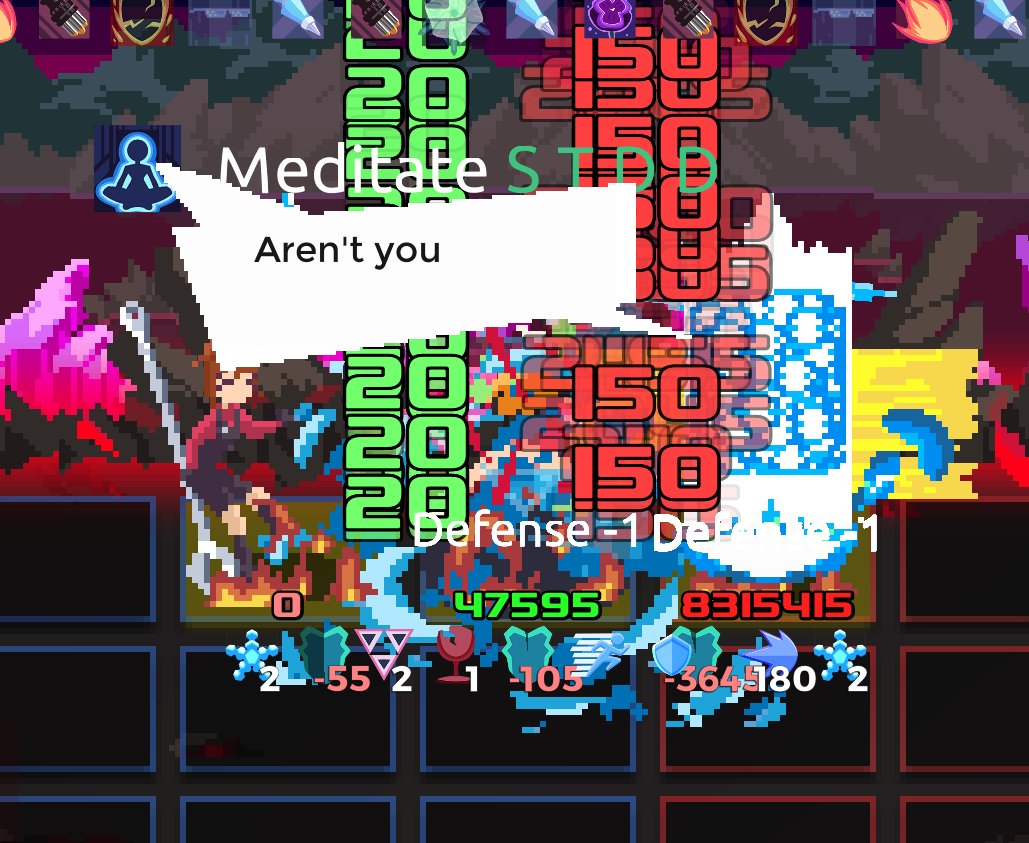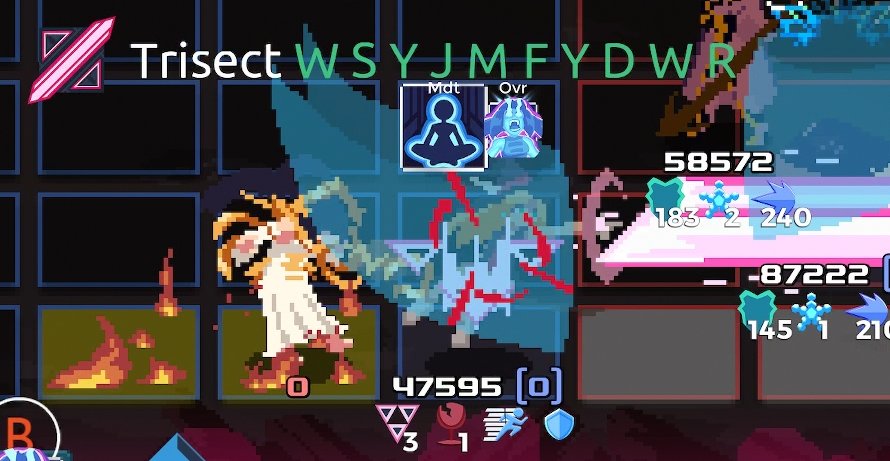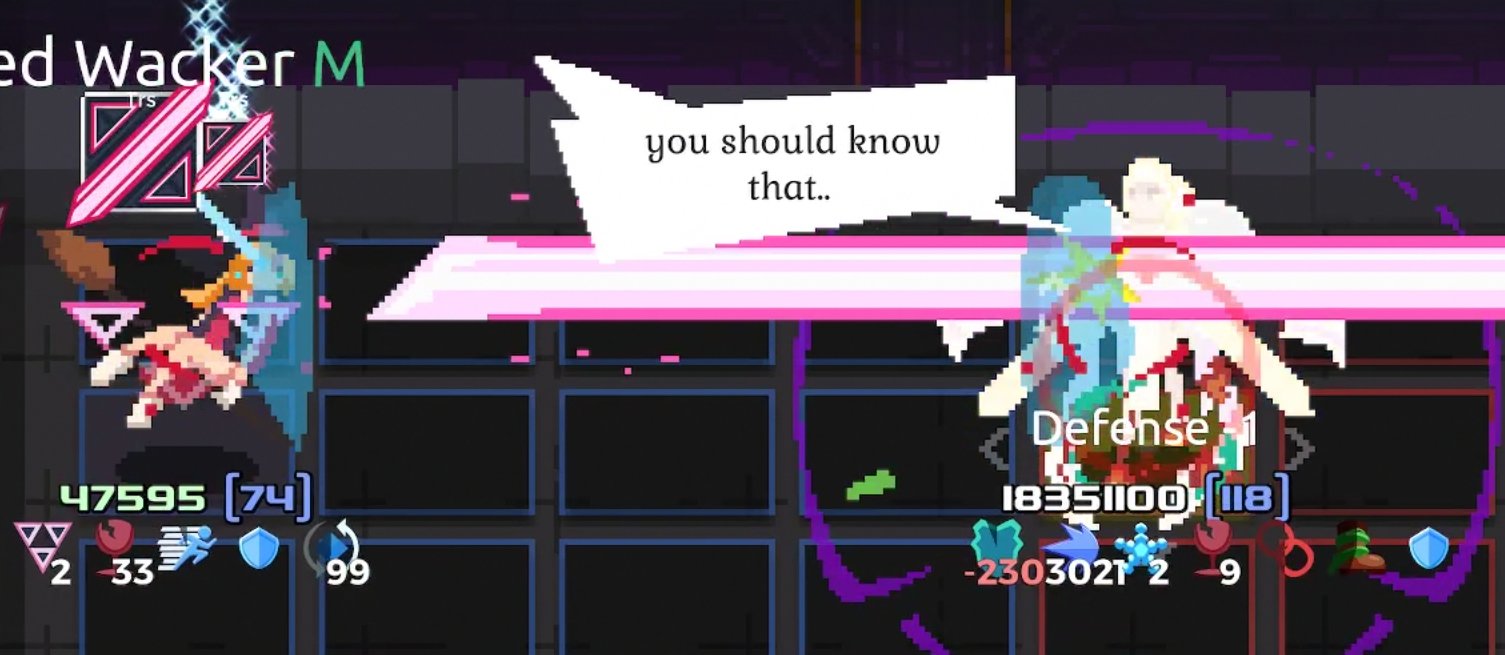Reaching loop 30 in One Step From Eden
So this happened.

To my knowledge, this is the farthest recorded loop in One Step From Eden. It consumed a weirdly large amount of my life, so I figure I should probably note down a few things in case someone wants to take a crack at it.
High-loop runs have almost nothing to do with the standard gameplay of One Step From Eden. The foundation of any loop-capable deck is Pocket Sand + some source of instant shuffles, usually Duel Disk; the goal is to run through your deck in under 1 second, reactivating Pocket Sand and maintaining permanent invulnerability.
Strong mana-generating spells or artifacts are crucial, especially because you’ll likely have to chew through the Jams added by Duel Disk; Blueberry Jam helps for this. Slap a Ghost Costume on top to cover you while you’re setting up (or eating through first-shuffle Consume spells), and you’re good to go. Since you can’t be damaged, your loop distance is limited only by your patience.
Of course, by loop 30, enemies in hallway combats have nearly 100,000 HP, often with hundreds of defense, and Loop 30 Gate starts with 40,000,000 HP; plinking away at this 1 HP at a time isn’t practical, so ideally your deck does something other than making you invincible.

Some options that I’ve experimented with in loop runs:
Sera Cannon: Doesn’t scale hard enough, even with Switchbait, Magnifying Glass and all the rest. There’s simply no way to acquire money that isn’t quickly outpaced by boss HP scaling, even with every artifact slot filled by a Mining Rig.
Thermite + Tinder: This combination is strong—once you’ve shredded something to -90 defense, each new Flame ticks instantly for 100 damage, generating a new Flame which ticks for 101 damage, generating a new Flame which ticks for 102 damage…
Once you’ve shredded to -100 defense, any hit also starts this chain reaction, and the result is flames ticking for thousands of damage thousands of times per game tic. Unfortunately, the longer this chain reaction goes on, the worse game performance gets, to the point where killing bosses with it frequently takes minutes per frame. Obviously, it shouldn’t be your primary damage source versus bosses.
Frost: It’s plausible to get multiple copies of Double Mint and Sunglasses, turning any Frost application into a self-sustaining meme bomb. With Freezer Burn + Thermite + Tinder, this does comical damage, and it’s what I used for hallway combats in my loop 30 run. A hidden “loop” artifact also applies starting Frost, which sometimes leads to really dumb-looking interactions at combat start.
Sadly, stacking too many Frost artifacts (or just having enemies spawn in the wrong configuration) locks the game up as it tries to process the overlapping explosions. Even though this is easily capable of killing any combat, sometimes before the combat even starts, it’s not practical to use as your sole damage source. (If you use it in any capacity, don’t enter rooms on your front column, since enemies on their front column will hit-test against you when Sunglasses procs.)

Limit Break: Limit Break is its own mana engine because of the “ejection” mechanic; if a spell costs more than your current max mana, pressing the button to cast it simply discards it for 1 mana. That 1 mana is a penalty, not a cost, so you can do this even if you don’t have mana—and if your max mana has been reduced to 0, you can cast all 0-mana spells, including Limit Break’s “X” cost, and eject all spells with an explicit mana cost, including the Jams from Duel Disk. If you avoid all sources of max mana, Doublecast on Limit Break (free double damage!) can drop your max mana to 0 before you even shuffle.
Limit Break’s high hit count also makes it ideal for spellpower, Dart Frog, and activating things like the Thermite+Tinder engine. In terms of game time, this is one of the most effective ways of dealing high damage quickly. In terms of real time, the high hitcount obliterates game performance and makes combats take forever, even in hallways. My previous loop record of 20 was set with this, and I gave up purely because fighting bosses became an awful chore.
Twoxin: Multiplication is strong, and the ability to get extra value out of Poison application with Venoshock DD is even stronger. Poison has a hidden cap of 999999, though, and the visual effect of poisons means it’s hard to scale without causing lag. This is easy to bootstrap “early” in a run, but you may want to switch to something different later.
Trisect: Trisect is the only lag-efficient way to handle giant boss HP pools, since it does percent damage in a single hit. Since the percentage hit only activates on Trinity cast, it’s ideally paired with Meditate, the only Trinity-gaining spell that can’t spend Trinity. (CORRECTION: Sequencer exists, but is largely impractical for this purpose.) Look for T (no anchor) upgrade to avoid slowing down your spells. You also need a source of direct damage, since Trisect’s effectiveness falls off quickly.

As you may have noticed, on high loops, Eden is more about managing game performance than the power of your deck or artifacts. (This isn’t because of my weak PC, either, I’m using a Ryzen 3900X and an RTX 2080 Super.) You’ll want to carefully manage overlapping artifact interactions and multihit spells, and even with the most “optimized” deck, you may need to periodically restart the game to clear up some lag, since the speed of your spellcasting is limited by the speed the game will accept your inputs. I recommend medium-speed turbo macros for both the A and B buttons. (Remember, running through your deck quickly is how you remain invincible!)
My final setup:
- Mana: Blue Blood + Mana Gem x4 + Violet x5 + Overload. With several copies of Meditate, it was basically impossible to run out of starting mana before hitting Overload, and since I already needed to run through the deck once every second for Pocket Sand, keeping Overload up permanently was trivial.
- Defense: Ghost Costume + Pocket Sand + Phase Plates + Flash Loader x6 + Preload DD x2. I think this is overkill. It’s simpler to do this with Duel Disk instead, but I wanted to retain the ability to manually shuffle if I ended up with a worst-case deck order or the game started bugging out and lagging.
- Boss damage: Trisect x? + Meditate x?. Just…a fuckton of copies of both those cards. This typically shredded about 75% of boss HP per shuffle, quickly bringing them within range for the hallway-combat setup to finish the job.
- Hallway damage: Thermite x5 + Tinder x5 + Freezer Burn + Double Mint x2 + Sunglasses x3 + Icing x9 + Blueberry Jam + Cynet + XD-40. Trisects flooded my deck with Jams, all conveniently placed at the end, and the artifact combination turned them into 1-mana Frostbolt DDDDDDDDs, so it was trivial to burn through them with Overload active and blow “lower”-HP enemies up with Frostbolt Tinder explosions. If I had added any more Frost artifacts, the game probably would have regularly crashed. Bonus: Cold-Pressed Juice x2 for an extra layer of unnecessary safety and some really funny screenshots. Cynet is huge for basically every deck, you kinda always want it.
- Misc: Weed Wacker x2. Unfortunately, you still have to aim at enemies; I initially experimented with an “automatic” setup using Northwind and Align, dragging enemies to the bottom row, but it was slower than just perma-rooting the entire screen and lining up with enemies manually. Add Wings (because fuck Terra) and Time Slow (because it “extends” the duration of roots and makes it easier to stay lined up with enemies) to taste.

I highly suggest playing as Saffron to avoid the Saffron fight—boss Saffron’s Second Soul leaves her invulnerable for a very long time and allows things like Thermite chain-reactions to continue hitting her, prolonging the fight by introducing tons of lag.
You can also abuse the hell out of refreshing shops in loop runs, since pacts quickly become the least expensive way to get upgrades; I ended with over 100 removals, and most of my spells had 4+ upgrades each (fishing primarily for Doublecast), to say nothing of the crazy max HP you can rack up. Note that no matter how many times you upgrade a spell, it’s impossible to get more than two Doublecast upgrades.
Don’t confuse easy removals with easy respecs, though. Acquiring multiple copies of spells takes multiple loops, and an inefficient deck will drastically slow you down. Once you have the Pocket Sand engine running, things should be pretty straightforward, but try to keep your deck as lean as possible until you see the “right” tools.

I decided to end my run at loop 30, since it seems obvious that it could have looped at a similar pace forever. As far as I’m concerned, I’ve “beaten” this aspect of Eden; I’m done with looping for a while, and I’ll probably put most of my playtime into HP13 winstreaks going forward. If you’ve managed a farther run, let me know!